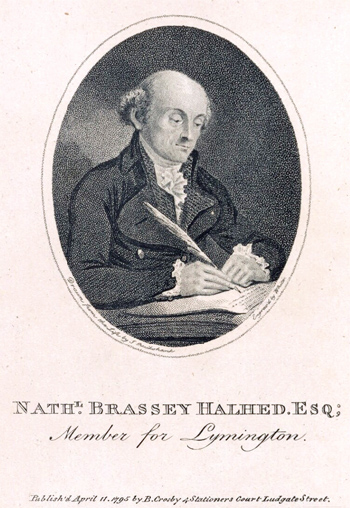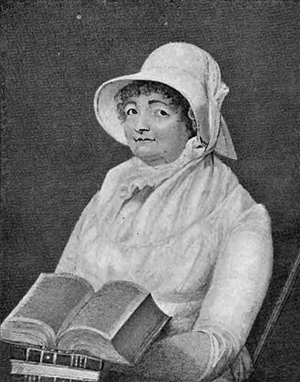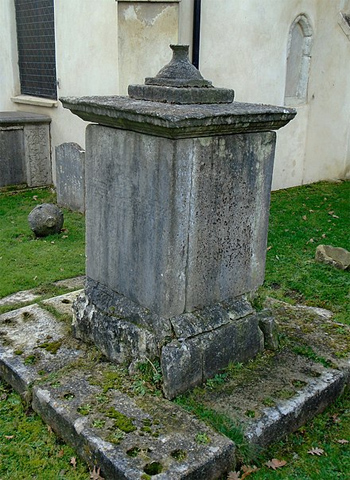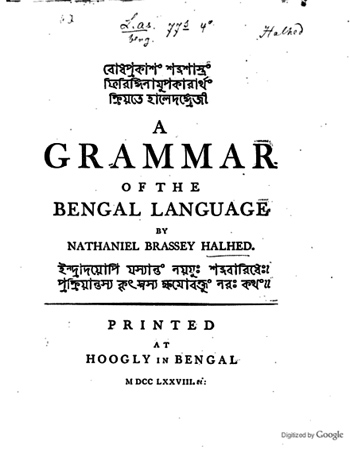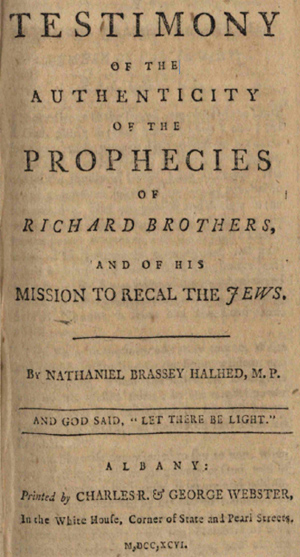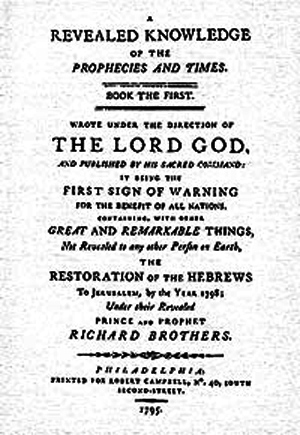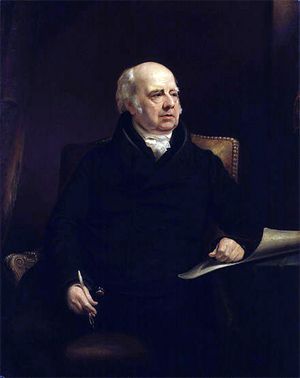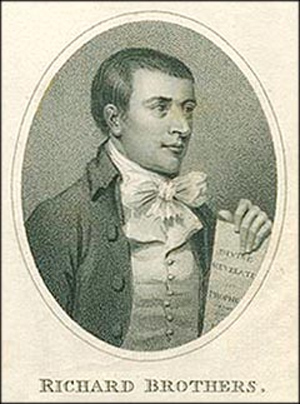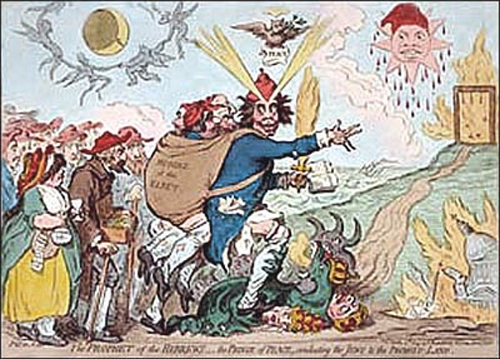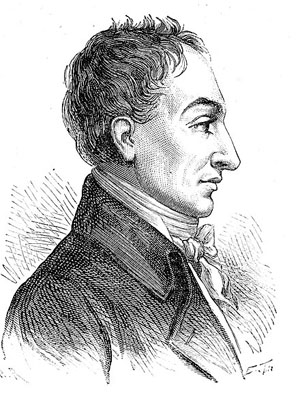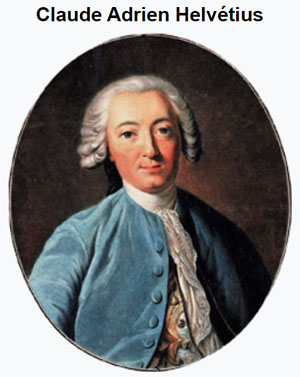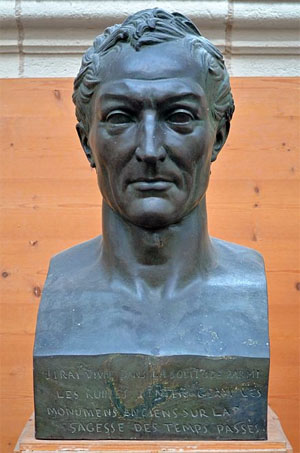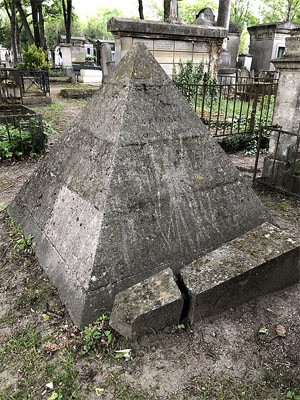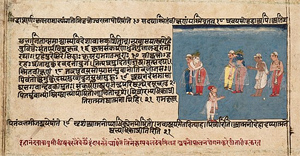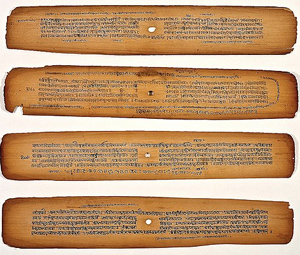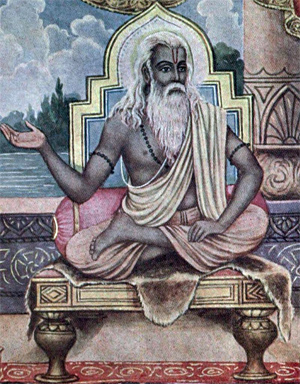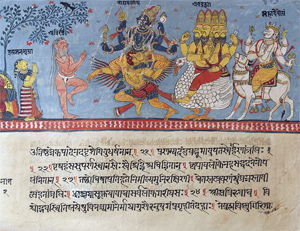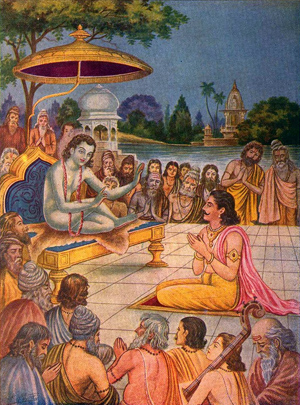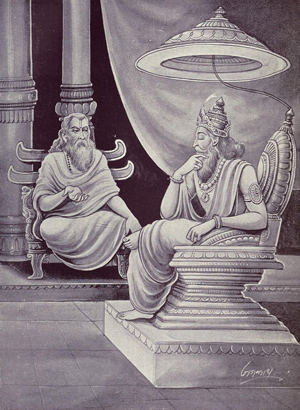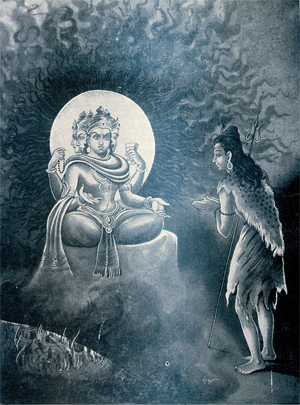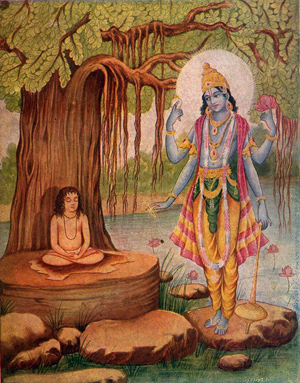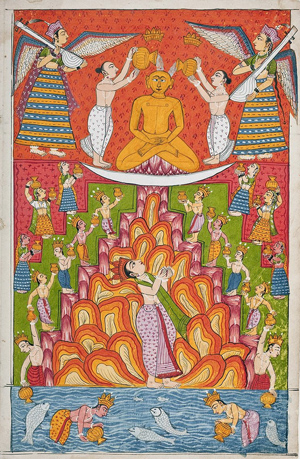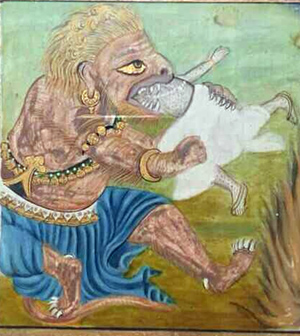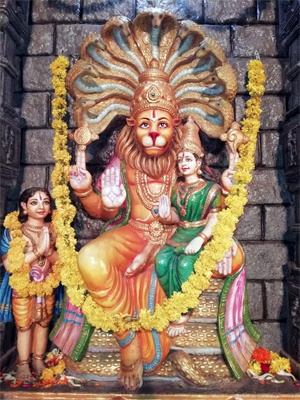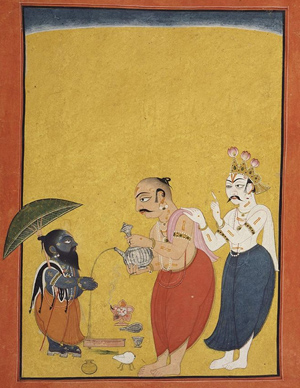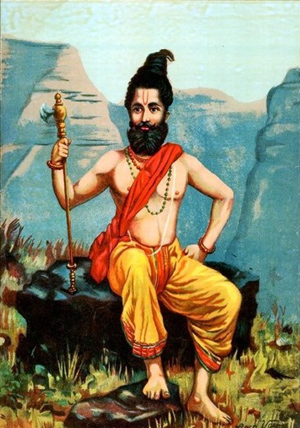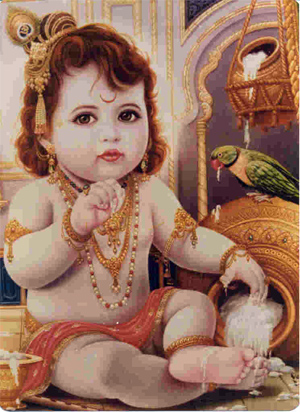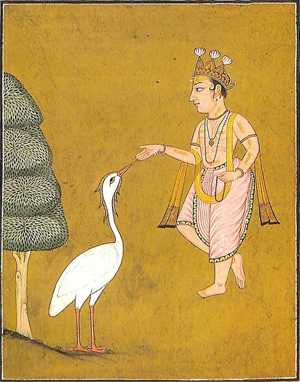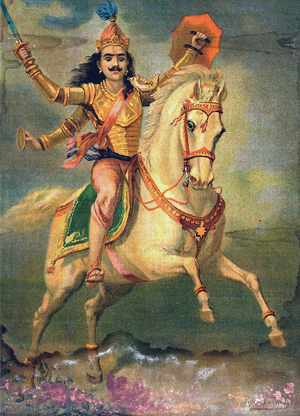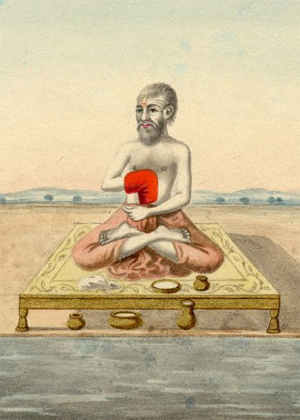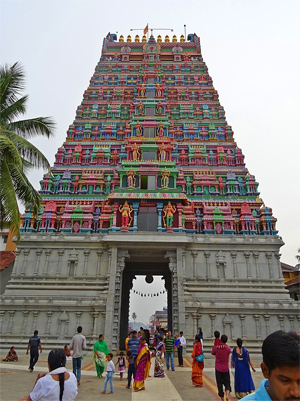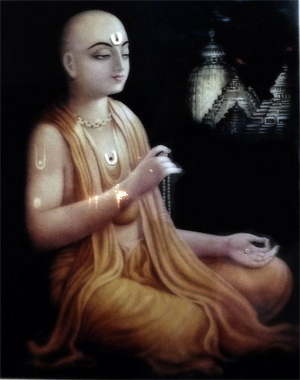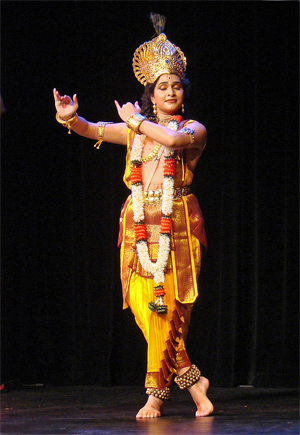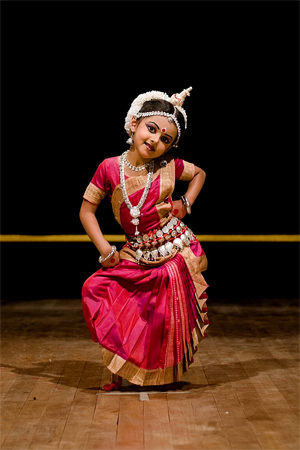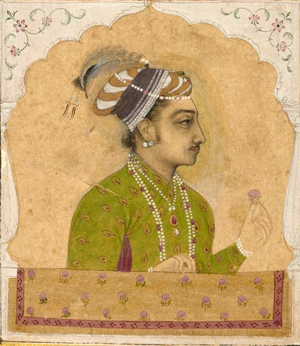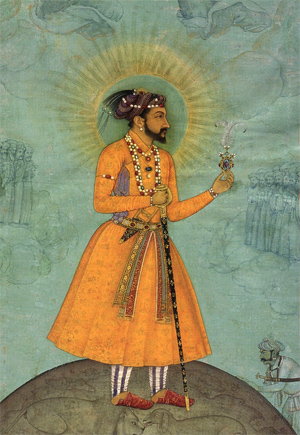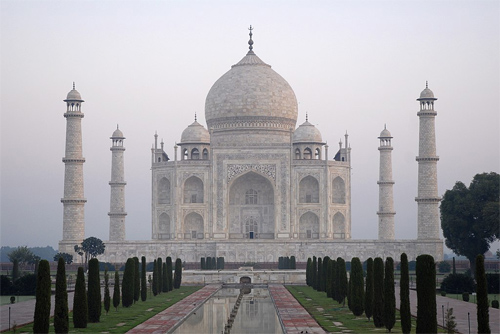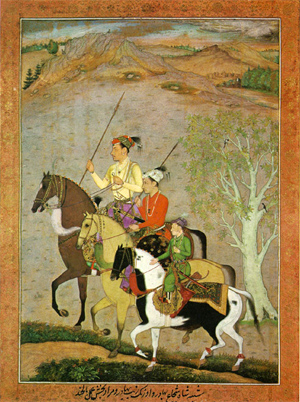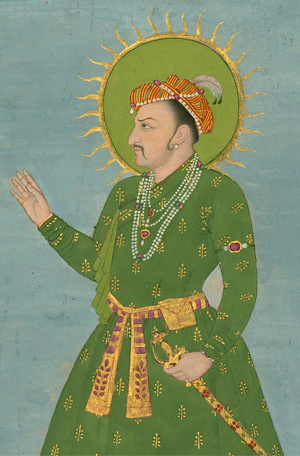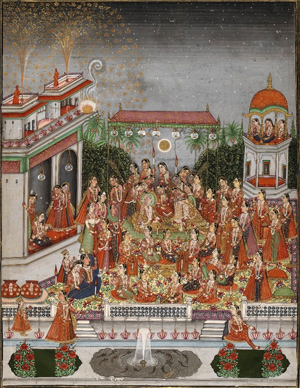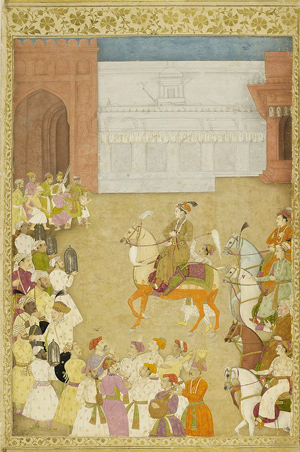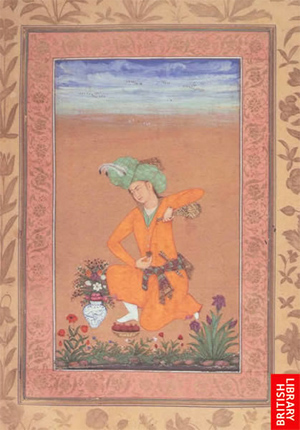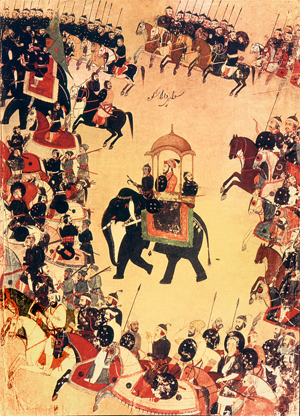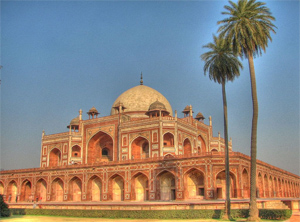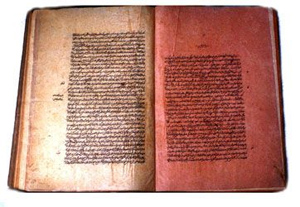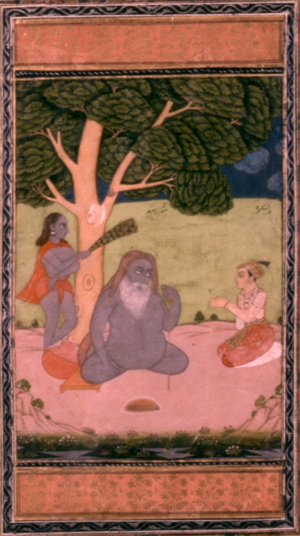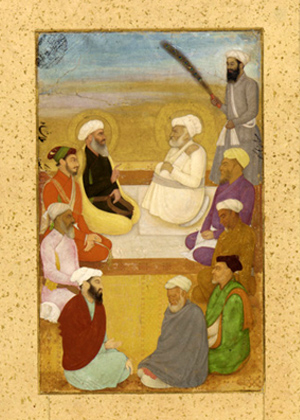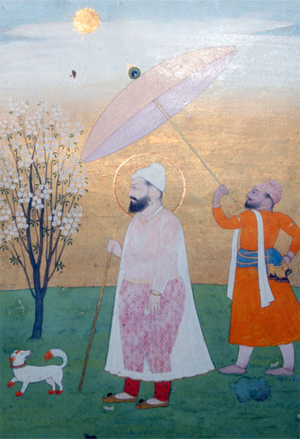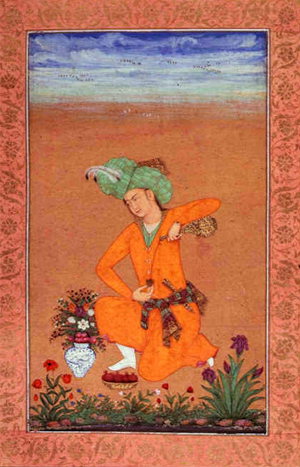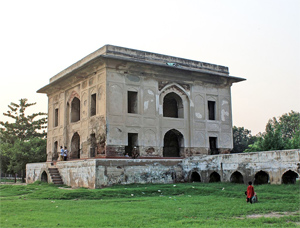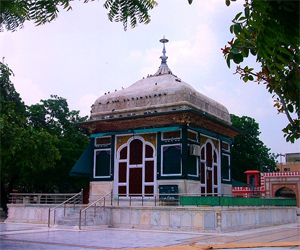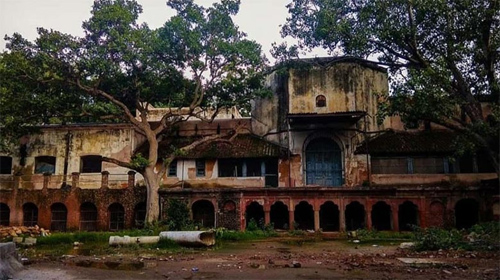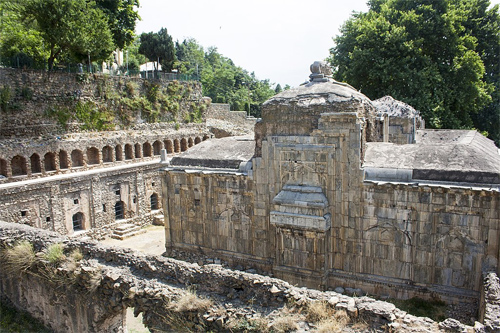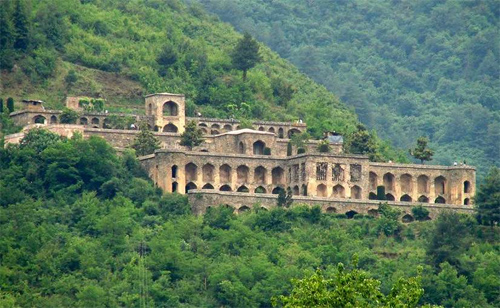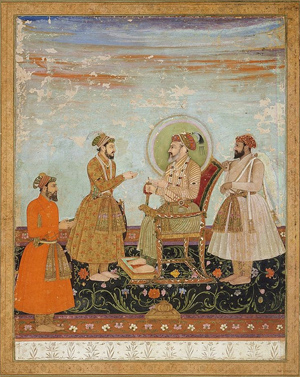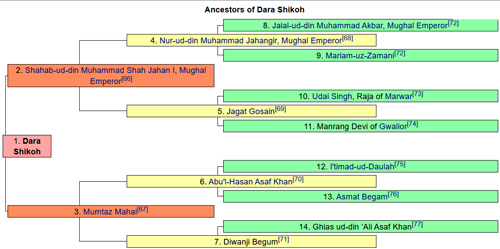by Wikipedia
Accessed: 11/27/20
-- Manu (Hinduism), by Wikipedia
-- Manusmriti, by Wikipedia
-- Institutes of Hindu Law: Or, The Ordinances of Menu, According to the Gloss of Culluca. Comprising the Indian System of Duties, Religious and Civil, Verbally translated from the original Sanscrit, With a Preface, by Sir William Jones
-- Matsya, by Wikipedia
-- Sethona. A Tragedy. As it is Performed at the Theatre-Royal in Drury-Lane, by Alexander Dow
-- Menes [Mneues], by Wikipedia
-- Mannus, by Wikipedia
This article is about Concept of Manu. For Surya's son and the current Manu, see Shraddhadeva Manu. For other uses, see Manu.
We have thus come to know certain very important facts about what our physiological life is. We must now go a little higher before we can fully understand what human life is as a whole. I have already hinted at the existence in the universe of a form of matter, higher in energy than solar matter. This matter I have named thought-matter, or Manas as it is called in Sanskrit. The centres of this thought-matter are called Manus. A Manu is in fact that bundle of ideas for the Universe, which in man is called the mind—Sanskrit Manas. It is these ideas which are the immediate cause of the substance and form and powers of prana. And it is these ideas which have caused the existence of life-bodies in the ocean of prana. You know very well that the human mind has a very great power upon the human life-body, and I may tell you here in brief that the object of Yoga is to give it the fullest power over every manifestation of human life, to render even the involuntary manifestations voluntary....
-- Karma and Reincarnation As Applied To Man (Being two papers read before the Meerut T.S., by Rama Prasad, M.A., F.T.S., revised and enlarged for the Press.), from "Lucifer, Vol. IX, London, November 15, 1891"
1. BEHOLD THE BEGINNING OF SENTIENT FORMLESS LIFE. FIRST THE DIVINE, THE ONE FROM THE MOTHER-SPIRIT; THEN THE SPIRITUAL; THE THREE FROM THE ONE, THE FOUR FROM THE ONE, AND THE FIVE FROM WHICH THE THREE, THE FIVE, AND THE SEVEN. THESE ARE THE THREE-FOLD, THE FOUR-FOLD DOWNWARD; THE “MIND-BORN” SONS OF THE FIRST LORD; THE SHINING SEVEN. IT IS THEY WHO ARE THOU, ME, HIM, OH LANOO. THEY, WHO WATCH OVER THEE, AND THY MOTHER EARTH. 2. THE ONE RAY MULTIPLIES THE SMALLER RAYS. LIFE PRECEDES FORM, AND LIFE SURVIVES THE LAST ATOM OF FORM. THROUGH THE COUNTLESS RAYS PROCEEDS THE LIFE-RAY, THE ONE, LIKE A THREAD THROUGH MANY JEWELS. 3. WHEN THE ONE BECOMES TWO, THE THREEFOLD APPEARS, AND THE THREE ARE ONE; AND IT IS OUR THREAD, OH LANOO, THE HEART OF THE MAN-PLANT CALLED SAPTASARMA. 4. IT IS THE ROOT THAT NEVER DIES; THE THREE-TONGUED FLAME OF THE FOUR WICKS. THE WICKS ARE THE SPARKS, THAT DRAW FROM THE THREE-TONGUED FLAME SHOT OUT BY THE SEVEN — THEIR FLAME — THE BEAMS AND SPARKS OF ONE MOON REFLECTED IN THE RUNNING WAVES OF ALL THE RIVERS OF EARTH. 5. THE SPARK HANGS FROM THE FLAME BY THE FINEST THREAD OF FOHAT. IT JOURNEYS THROUGH THE SEVEN WORLDS OF MAYA. IT STOPS IN THE FIRST, AND IS A METAL AND A STONE; IT PASSES INTO THE SECOND AND BEHOLD — A PLANT; THE PLANT WHIRLS THROUGH SEVEN CHANGES AND BECOMES A SACRED ANIMAL. FROM THE COMBINED ATTRIBUTES OF THESE, MANU, THE THINKER IS FORMED. WHO FORMS HIM? THE SEVEN LIVES, AND THE ONE LIFE. WHO COMPLETES HIM? THE FIVE-FOLD LHA. AND WHO PERFECTS THE LAST BODY? FISH, SIN, AND SOMA....
All this, teaches the hidden Science, is but the temporary reflection, the shadow of the eternal ideal prototype in Divine Thought; the word “Eternal,” note well again, standing here only in the sense of “AEon,” as lasting throughout the seemingly interminable, but still limited cycle of activity, called by us Manvantara. For what is the real esoteric meaning of Manvantara, or rather a Manu-Antara? It means, esoterically, “between two Manus,” of whom there are fourteen in every “Day of Brahma,” such a “Day” consisting of 1,000 aggregates of four ages, or 1,000 “Great Ages,” Mahayugas. Let us now analyse the word or name Manu. Orientalists and their Dictionaries tell us that the term “Manu” is from the root Man, “to think”; hence “the thinking man.” But, esoterically, every Manu, as an anthropomorphized patron of his special cycle (or Round), is but the personified idea of the “Thought Divine” (as the Hermetic “Pymander”); each of the Manus, therefore, being the special god, the creator and fashioner of all that appears during his own respective cycle of being or Manvantara. Fohat runs the Manus’ (or Dhyan-Chohans’) errands, and causes the ideal prototypes to expand from within without — viz., to cross gradually, on a descending scale, all the planes from the noumenon to the lowest phenomenon, to bloom finally on the last into full objectivity — the acme of illusion, or the grossest matter....
In the “Book of Hermes,” Pymander, the oldest and the most spiritual of the Logoi of the Western Continent, appears to Hermes in the shape of a Fiery Dragon of “Light, Fire, and Flame.” Pymander, the “Thought Divine” personified, says: The Light is me, I am the Nous (the mind or Manu), I am thy God, and I am far older than the human principle which escapes from the shadow (“Darkness,” or the concealed Deity). I am the germ of thought, the resplendent Word, the Son of God. All that thus sees and hears in thee is the Verbum of the Master, it is the Thought (Mahat) which is God, the Father. The celestial Ocean, the AEther .... is the Breath of the Father, the life-giving principle, the Mother, the Holy Spirit, .... for these are not separated, and their union is LIFE.” ...
We are forced to use here the misleading word “Men,” and this is a clear proof of how little any European language is adapted to express these subtle distinctions. It stands to reason that these “Men” did not resemble the men of to-day, either in form or nature. Why then, it may be asked, call them “Men” at all? Because there is no other term in any Western language which approximately conveys the idea intended. The word “Men” at least indicates that these beings were “MANUS,” thinking entities, however they differed in form and intellection from ourselves. But in reality they were, in respect of spirituality and intellection, rather “gods” than “Men.”
-- The Secret Doctrine: The Synthesis of Science, Religion, and Philosophy, by Helena P. Blavatsky, 1888
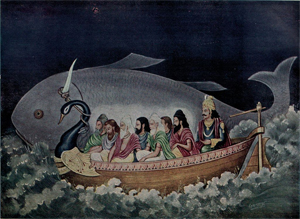
Matsya protecting Vaivasvata Manu and the seven sages at the time of Deluge/Great Flood
Manu (Sanskrit: मनु) is a term found with various meanings in Hinduism. In early texts, it refers to the archetypal man, or to the first man (progenitor of humanity). The Sanskrit term for 'human', मानव (IAST: mānava) means 'of Manu' or 'children of Manu'.[1] In later texts, Manu is the title or name of fourteen mystical Kshatriya rulers of earth, or alternatively as the head of mythical dynasties that begin with each cyclic kalpa (aeon) when the universe is born anew.[1] The title of the text Manusmriti uses this term as a prefix, but refers to the first Manu – Svayambhuva, the spiritual son of Brahma.[2]
According to Puranas, each kalpa consists of fourteen Manvantaras, and each Manvantara is headed by a different Manu.[1] The current universe, is asserted to be ruled by the 7th Manu named Vaivasvata.[2]
In Vishnu Purana, Vaivasvata, also known as Sraddhadeva or Satyavrata, was the king of Dravida before the great flood.[3] He was warned of the flood by the Matsya (fish) avatar of Vishnu, and built a boat that carried the Vedas, Manu's family and the seven sages to safety, helped by Matsya. The tale is repeated with variations in other texts, including the Mahabharata and a few other Puranas. It is similar to other flood such as that of Gilgamesh and Noah.[4]
Matsya
As related in the main article, Matsya, the fish avatar of Vishnu, appears to Manu to warn him of an impending deluge. After being reared by and growing to an enormous size, Matsya then guides Manu's ship to safety at the peak of a mountain, where Manu re-establishes life through the performance of Vedic sacrificial rites (yajna). In Puranic accounts, Matsya also rescues the Vedas taken under the water, after they were stolen from Brahma by the Asura called Hayagriva (not to be confused with Hayagriva, the horse-headed avatar of Vishnu). From the Shatapatha Brahmana:manave ha vai prātaḥ | avanegyamudakamājahruryathedam pāṇibhyāmavanejanāyāharantyevaṃ tasyāvanenijānasya matsyaḥ pāṇī āpede
sa hāsmai vācamuvāda | bibhṛhi mā pārayiṣyāmi tveti kasmānmā pārayiṣyasītyaugha imāḥ sarvāḥ prajā nirvoḍhā tatastvā pārayitāsmīti kathaṃ te bhṛtiriti
sa hovāca | yāvadvai kṣullakā bhavāmo bahvī vai nastāvannāṣṭrā bhavatyuta matsya eva matsyaṃ gilati kumbhyām māgre bibharāsi sa yadā tāmativardhā atha karṣūṃ khātvā tasyām mā bibharāsi sa yadā tāmativardhā atha mā samudramabhyavaharāsi tarhi vā atināṣṭro bhavitāsmīti
śaśvaddha kaṣa āsa | sa hi jyeṣṭhaṃ vardhate 'thetithīṃ samāṃ tadaugha āgantā tanmā nāvamupakalpyopāsāsai sa augha utthite nāvamāpadyāsai tatastvā pārayitāsmīti
—Satapatha Brahmnana, transliteration of Kanda I, Adhyaya VIII, Brahmana I ('The Ida'), Verses 1-4[14]
In the morning they brought to Manu water for washing, just as now also they (are wont to) bring (water) for washing the hands. When he was washing himself, a fish came into his hands.
It spake to him the word, 'Rear me, I will save thee!' 'Wherefrom wilt thou save me?' 'A flood will carry away all these creatures: from that I will save thee!' 'How am I to rear thee?'
It said, 'As long as we are small, there is great destruction for us: fish devours fish. Thou wilt first keep me in a jar. When I outgrow that, thou wilt dig a pit and keep me in it. When I outgrow that, thou wilt take me down to the sea, for then I shall be beyond destruction.'
It soon became a ghasha (a large fish); for that grows largest (of all fish). Thereupon it said, 'In such and such a year that flood will come. Thou shalt then attend to me (i.e. to my advice) by preparing a ship; and when the flood has risen thou shalt enter into the ship, and I will save thee from it.'
—Satapatha Brahmana, translation by Julius Eggeling (1900), Kanda I, Adhyaya VIII, Brahmana I ('The Ida'), Verses 1-4[47]Heinrich Julius Eggeling (1842–1918) was Professor of Sanskrit at the University of Edinburgh from 1875 to 1914, second holder of its Regius Chair of Sanskrit, and Secretary of the Royal Asiatic Society, London.
Eggeling was translator and editor of the Satapatha Brahmana in 5 volumes of the monumental Sacred Books of the East series edited by Max Müller, author of the main article on Sanskrit in the Encyclopædia Britannica, and curator of the University Library from 1900 to 1913.
-- Julius Eggeling, by Wikipedia
Aiyangar explains that, in relation to the RigVeda, 'Sacrifice is metaphorically called [a] Ship and as Manu means man, the thinker, [so] the story seems to be a parable of the Ship of Sacrifice being the means for man's crossing the seas of his duritas, [meaning his] sins, and troubles'. SB 13.4.3.12 also mentions King Matsya Sammada, whose 'people are the water-dwellers... both fish and fishermen... it is these he instructs; - 'the Itihasa is the Veda'.'
-- Shatapatha Brahmana, by Wikipedia
The kala pani (lit. black water) represents the proscription of the over reaching seas in Hinduism. According to this prohibition, crossing the seas to foreign lands causes the loss of one's social respectability, as well as the putrefaction of one’s cultural character and posterity.
The offense of crossing the sea is also known as "Samudrolanghana" or "Sagarollanghana". The Dharma Sutra of Baudhayana (II.1.2.2) lists sea voyages as first of the offenses that cause the loss of varna. The Dharma Sutra suggests a person can wipe away this offense in three years by eating little at every fourth meal time; bathing at dawn, noon and dusk; standing during the day; and seated during the night.
The reasons behind the proscription include the inability to carry out the daily rituals of traditional Hindu life and the sin of contact with the characterless, uncivilized mleccha creatures of the foreign lands. An associated notion was that crossing the ocean entailed the end of the reincarnation cycle, as the traveler was cut off from the regenerating waters of the Ganges. Such voyages also meant breaking family and social ties. In another respect, the inhabitants of the land beyond the "black water" were houglis, bad-spirited and monstrous swines who could sometimes mask their true ugliness by presenting an illusion of physical beauty or superiority. The mleccha people were spawned by immoral reprobates and blasphemously held religious belief in nāstika, albeit in different forms. They are understood to have rejected the Vedas and have ceased to worship Bhagavan, the divine Vedic God, in favor of concocted false religions and irreligions with contemptible manners of reverence. Their societies are immoral and built on deceit, subjugation, and corruption. Therefore, it was thought that true Hindus should not come under their influence or embrace their beliefs, as they will be just as deserving of contempt as a mleccha.
During the Portuguese Age of exploration, Portuguese sailors noted that Hindus were reluctant to engage in maritime trade due to the kala pani proscription. In the eighteenth century, the banias of North India even considered the crossing of the Indus River at Attock to be prohibited, and underwent purification rituals upon their return.
-- Kala pani (taboo), by Wikipedia
Fourteen Manus
There are fourteen Manus that rule in succession during each Kalpa (day of Brahma). The current Kalpa has the following Manus:
List of Manus according to Source
Manvantara / Bhagavatha Purana[5] / Brahma Purana[6] / Linga Purana[7] / Skanda Purana 1[8] / Skanda Purana 2[9]
1 / Svayambhuva
2 / Svarocisha
3 / Uttama
4 / Tapasa/Tamasa
5 / Raivata
6 / Cakshusha
7 / Vaivasvata (current)
8 / Savarni
9 / Daksha-savarni / Raibhya / Dharma / Brahma-savarni / Bhautya
10 / Brahma-savarni / Raucya / Savarnika / Rudra-savarni / Raucya
11 / Dharma-savarni / The four Merusavarnis / Pisanga / Daksa-sarvarni / Brahma-savarni
12 / Rudra-savarni / Apisangabha / Dharma-savarni / Rudra-savarni
13 / Deva-savarni / Sabala / Raucya / Meru-savarni
14 / Indra-savarni / Varnaka / Bhautya / Daksha-savarni
Swayambhu Manu
In this Manvantara, the Saptarshis were Marichi, Atri, Angiras, Pulaha, Kratu, Pulastya, and Vashishtha.[10][11] In Svayambhuva-manvantara, Lord Vishnu's avatar was called Yajna.
The first Manu was Swayambhuva Manu. He had three daughters, namely Akuti, Devahuti and Prasuti. Devahuti was given in marriage to sage Kardama and she gave birth to nine daughters, and a single son named Kapila. Prasuti gave birth to Yajna and Akuti gave birth to one son and one daughter. Both Kapila and Yajna, who were sons of Devahuti and Prasuti respectively, were incarnations of Vishnu. Svayambhuva Manu, along with his wife, Satarupa, went into the forest to practice austerities on the bank of the River Sunanda. At some point in time, Rakshasas attacked them, but Yajna, accompanied by his sons, the demigods, swiftly killed them. Then Yajna personally took the post of Indra, the King of the heavenly planets.
Swarochisha Manu
The Saptarshis were Urjastambha, Agni, Prana, Danti, Rishabha, Nischara, and Charvarivan. In Svarocisha-manvantara, Lord Vishnu's avatar was called Vibhu.
The second Manu, whose name was Svarocisha, was the son of Agni, and His sons were headed by Dyumat, Sushena and Rochishmat. In the age of this Manu, Rochana became Indra, the ruler of the heavenly planets, and there were many demigods, headed by Tushita. There were also many saintly persons, such as Urjastambha. Among them was Vedasira, whose wife, Tushita, gave birth to Vibhu. Vibhu was the incarnation of Vishnu for this Manvantara. He remained a Brahmachari all his life and never married. He instructed eighty-eight thousand dridha-vratas, or saintly persons, on sense-control and austerity.
Uttama Manu
The Saptarshis for this Manvantara were Kaukundihi, Kurundi, Dalaya, Sankha, Pravahita, Mita, and Sammita. In Uttama-manvantara, Lord Vishnu's avatar was called Satyasena.
Uttama, the son of Priyavrata, was the third Manu. Among his sons were Pavana, Srinjaya and Yajnahotra. During the reign of this Manu, the sons of Vashista, headed by Pramada, became the seven saintly persons. The Satyas, Devasrutas and Bhadras became the demigods, and Satyajit became Indra. From the womb of Sunrita, the wife of Dharma, the Supreme Lord Narayana appeared as Satyasena, and killed all the evil Rakshasas who created havoc in all the worlds, along with Satyajit, who was Indra at that time.
Tapasa/Tamasa Manu
Saptarshis list: Jyotirdhama, Prithu, Kavya, Chaitra, Agni, Vanaka, and Pivara. In Tapasa-manvantara, Lord Vishnu's avatar was called Hari.
Tapasa/Tamasa, the brother of the third Manu, was the fourth Manu, and he had ten sons, including Prithu, Khyati, Nara and Ketu. During his reign, the Satyakas, Haris, Viras and others were demigods, the seven great saints were headed by Jyotirdhama, and Trisikha became Indra. Harimedha begot a son named Hari, who was the incarnation of Vishnu for this Manvantara, by his wife Harini. Hari was born to liberate the devotee Gajendra.
Raivata Manu
Saptarshis list: Hirannyaroma, Vedasrí, Urddhabahu, Vedabahu, Sudhaman, Parjanya, and Mahámuni. In Raivata-manvantara, Lord Vishnu's avatar was called Vaikuntha, not to be confused with Vishnu’s divine realm, of the same name.
Vaikuntha came as Raivata Manu, the twin brother of Tamasa. His sons were headed by Arjuna, Bali and Vindhya. Among the demigods were the Bhutarayas, and among the seven brahmanas who occupied the seven planets were Hiranyaroma, Vedasira and Urdhvabahu.
Chakshusha Manu
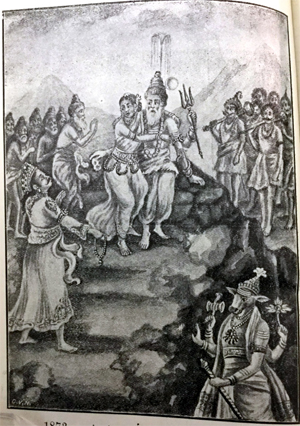
SUDYUMNAN SEES RUDRA AND PARVATI
Saptarshis list: Sumedhas, Virajas, Havishmat, Uttama, Madhu, Abhináman, and Sahishnnu. In Chakshusha-manvantara, Lord Vishnu's avatar was called Ajita.
Ajita came as Chakshsusa Manu, the son of the demigod Chakshu. He had many sons, headed by Puru, Purusa and Sudyumna. During the reign of Chakshusa Manu, the King of heaven was known as Mantradruma. Among the demigods were the Apyas, and among the great sages were Havisman and Viraka.
Vaivasvata Manu
The current Manu. Saptarshis list: Kashyapa, Atri, Vashista, Angira, Gautama, Agastya, Bharadvaja.[11] During Vaivasvata-manvantara, Lord Vishnu's avatar is called Matsya.
The seventh Manu, who is the son of Vivasvan, is known as Sraddhadeva(or satyavrata ) or Vaivasvat(son of Vivasvan). He has ten sons, named Ikshvaku, Nabhaga, Dhrsta, Saryati, Narisyanta, Dista (Nabhanedista), Tarusa (Karusha), Prsadhra and Vasuman (Pramshu). In this manvantara, or reign of Manu, among the demigods are the Adityas, Vasus, Rudras, Visvedevas, Maruts, Asvini-kumaras and Rbhus. The king of heaven, Indra, is known as Purandara, and the seven sages are known as Kashyapa, Atri, Vashista, Angira, Gautama, Agastya and Bharadwaja.
Surya Savarni Manu
Saptarshis list: Diptimat, Galava, Parasurama, Kripa, Drauni or Ashwatthama, Vyasa, and Rishyasringa.[12] In Savarnya-manvantara, Lord Vishnu's avatar will be called Sarvabhauma.
In the period of the eighth Manu, the Manu is Surya Savarnika Manu. His sons are headed by Nirmoka, and among the demigods are the Sutapas. Bali, the son of Virochana, is Indra, and Galava and Parasurama are among the seven sages. In the age of this Manu, Lord Vishnu's avatar will be called Sarvabhauma, the son of Devaguhya
Daksa Savarni Manu
Saptarshis list: Savana, Dyutimat, Bhavya, Vasu, Medhatithi, Jyotishmán, and Satya. In Daksha-savarnya-manvantara, Lord Vishnu's avatar will be called Rishabha.
The ninth Manu is Daksha-savarni. His sons are headed by Bhutaketu, and among the demigods are the Maricigarbhas. Adbhuta is Indra, and among the seven sages is Dyutiman. Rishabha would be born of Ayushman and Ambudhara...
Brahma Savarni Manu
Saptarshis list: Havishmán, Sukriti, Satya, Apámmúrtti, Nábhága, Apratimaujas, and Satyaket. In Brahma-savarnya-manvantara, Lord Vishnu's avatar will be called Vishvaksena.
In the period of the tenth Manu, the Manu is Brahma-savarni. Among his sons is Bhurishena, and the seven sages are Havishman and others. Among the demigods are the Suvasanas, and Sambhu is Indra. Vishvaksena would be a friend of Sambhu and will be born from the womb of Vishuci in the house of a brahmana named Visvasrashta.
Dharma Savarni Manu
Saptarshis list: Niśchara, Agnitejas, Vapushmán, Vishńu, Áruni, Havishmán, and Anagha. In Dharma-savarnya-manvantara, Lord Vishnu's avatar will be called Dharmasetu.
In the period of the eleventh Manu, the Manu is Dharma-savarni, who has ten sons, headed by Satyadharma. Among the demigods are the Vihangamas, Indra is known as Vaidhrita, and the seven sages are Aruna and others. Dharmasetu will be born of Vaidhrita and Aryaka.
Rudra Savarni Manu
Saptarshis list: Tapaswí, Sutapas, Tapomúrtti, Taporati, Tapodhriti, Tapodyuti, and Tapodhan. In Rudra-savarnya-manvantara, Lord Vishnu's avatar will be called Sudhama.
In the period of the twelfth Manu, the Manu is Rudra-savarni, whose sons are headed by Devavan. The demigods are the Haritas and others, Indra is Ritadhama, and the seven sages are Tapomurti and others. Sudhama, or Svadhama, who will be born from the womb of Sunrita, wife of a Satyasaha.
Raucya or Deva Savarni Manu
Saptarshis list: Nirmoha, Tatwadersín, Nishprakampa, Nirutsuka, Dhritimat, Avyaya, and Sutapas. In Deva-savarnya-manvantara, Lord Vishnu's avatar will be called Yogeshwara.
In the period of the thirteenth Manu, the Manu is Deva-savarni. Among his sons is Chitrasena, the demigods are the Sukarmas and others, Indra is Divaspati, and Nirmoka is among the sages. Yogeshwara will be born of Devahotra and Brihati.
Indra Savarni Manu
Saptarshis list: Agnibáhu, Śuchi, Śhukra, Magadhá, Gridhra, Yukta, and Ajita. In Indra-savarnya-manvantara, Lord Vishnu's avatar will be called Brihadbhanu.
In the period of the fourteenth Manu, the Manu is Indra-savarni. Among his sons are Uru and Gambhira, the demigods are the Pavitras and others, Indra is Suci, and among the sages are Agni and Bahu. Brihadbhanu will be born of Satrayana from the womb of Vitana.
Almost all literature refers to the first 9 Manus with the same names but there is a lot of disagreement on names after that, although all of them agree with a total of 14.[13]
Bibliography
Main article: Manusmriti
The texts ascribed to the Svayambhuva Manu include Manava Grihyasutra, Manava Sulbasutra and Manava Dharmashastra (Manusmṛti or "rules of Manu").[14]
In Jainism
Main article: Kulakara
Jain theology mentions the 14th patriarch named Nabhiraja, mentioning him also as Manu.[15] This, state scholars, links ancient Jain tradition to Hindu mythologies, because the 14 patriarchs in Jain myths are similar to the 14 Manus in Hindu myths.[15] The Manu of Jainism is the father of 1st Tirthankara Rishabhanatha (Adinatha).[15] This ancient story is significant as it includes one of earliest mentions of ikshu (sugarcane) processing.[15]
See also
• Adam
• Proto-Indo-European religion, §Brothers
• Minos, king of Crete, son of Zeus and Europa.
• Mannus, progenitor of humanity in Germanic mythology according to Tacitus.
• Manes, king of Lydia
• Nu'u, Hawaiian mythological character who built an ark and escaped a Great Flood.
• Nüwa, goddess in Chinese mythology best known for creating mankind.
• Noah
• Ziusudra, hero of the Sumerian flood epic
• Atra-Hasis
References
1. Roshen Dalal (2010). Hinduism: An Alphabetical Guide. Penguin Books. p. 242. ISBN 978-0-14-341421-6.
2. Roshen Dalal (2010). The Religions of India: A Concise Guide to Nine Major Faiths. Penguin Books. p. 229. ISBN 978-0-14-341517-6.
3. Alain Daniélou (11 February 2003). A Brief History of India. Inner Traditions / Bear & Co. pp. 19–. ISBN 978-1-59477-794-3.
4. Klaus K. Klostermaier (5 July 2007). A Survey of Hinduism: Third Edition. SUNY Press. p. 97. ISBN 978-0-7914-7082-4.
5. His Divine Grace A. C. Bhaktivedanta Swami Prabhupada. Teachings of Lord Caitanya (Third Edition): The Golden Avatara. The Bhaktivedanta Book Trust. pp. 109\u2013. ISBN 978-91-7149-730-7.
6. Motilal Banarsidass (1 January 1955). Brahma Purana - Parts I - IV. pp. 29 (3.4-7).
7. J.L.Shastri (1951). Linga Purana - English Translation - Part 1 of 2. pp. 24 (7.22-28).
8. N.A (1950). THE SKANDA-PURANA PART. 2. MOTILAL BANARSIDASS PUBLISHERS PVT. LTD, DELHI. pp. 45 (5.71-25).
9. N.A (1951). THE SKANDA-PURANA PART. 7. MOTILAL BANARSIDASS PUBLISHERS PVT. LTD, DELHI. pp. 317 (25.22-24).
10. Account of the several Manus and Manwantaras Vishnu Purana, translated by Horace Hayman Wilson, 1840, Book III: Chapter I. p. 259, The first Manu was Swáyambhuva, then came Swárochisha, then Auttami, then Támasa, then Raivata, then Chákshusha: these six Manus have passed away. The Manu who presides over the seventh Manwantara, which is the present period, is Vaivaswata, the son of the sun...
11. Inhabitants of the Worlds Mahanirvana Tantra, translated by Arthur Avalon, (Sir John Woodroffe), 1913, Introduction and Preface. The Rishi are seers who know, and by their knowledge are the makers of shastra and "see" all mantras. The word comes from the root rish Rishati-prapnoti sarvvang mantrang jnanena pashyati sangsaraparangva, etc. The seven great Rishi or saptarshi of the first manvantara are Marichi, Atri, Angiras, Pulaha, Kratu, Pulastya, and Vashista. In other manvantara there are other saptarshi. In the present manvantara the seven are Kashyapa, Atri, Vashista, Vishvamitra, Gautama, Jamadagni, Bharadvaja. To the Rishi the Vedas were revealed. Vyasa taught the Rigveda so revealed to Paila, the Yajurveda to Vaishampayana, the Samaveda to Jaimini, Atharvaveda to Samantu, and Itihasa and Purana to Suta. The three chief classes of Rishi are the Brahmarshi, born of the mind of Brahma, the Devarshi of lower rank, and Kings who became Rishis through their knowledge and austerities, such as Janaka, Ritaparna, etc. The Shrutarshi are makers of Shastras, as Sushruta. The Kandarshi are of the Karmakanda, such as Jaimini.
12. Maharishi Aswathama Retrieved 2015-02-15
13. Summary of Manu in Ancient Literature मनु (आदिपुरुष) Ghanshyam Dusane
14. The Laws of Manu. See 63: These seven very glorious Manus, the first among whom is Svayambhuva, produced and protected this whole movable and immovable (creation), each during the period (allotted to him).
15. Natubhai Shah 2004, pp. 15–16.
Sources
• Shah, Natubhai (2004) [First published in 1998], Jainism: The World of Conquerors, I, Motilal Banarsidass, ISBN 81-208-1938-1
External links
• Manu in Vedic scripture

